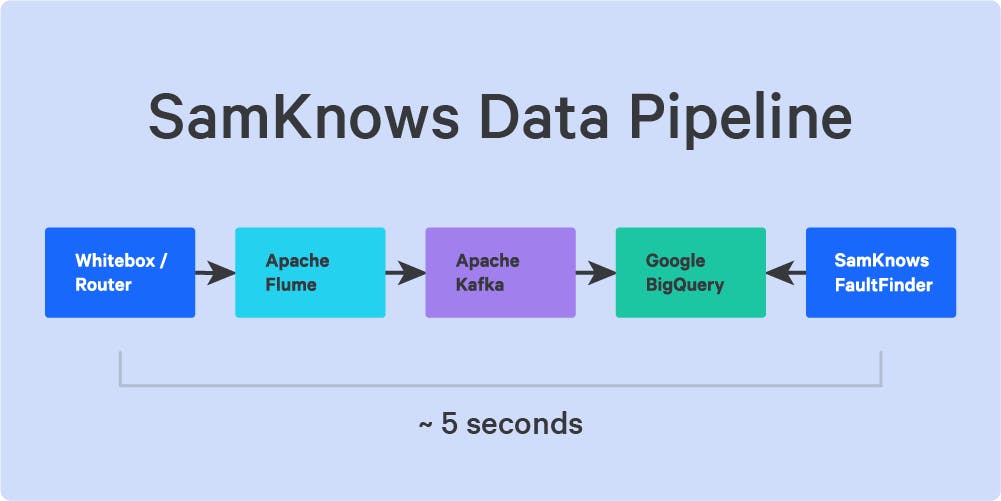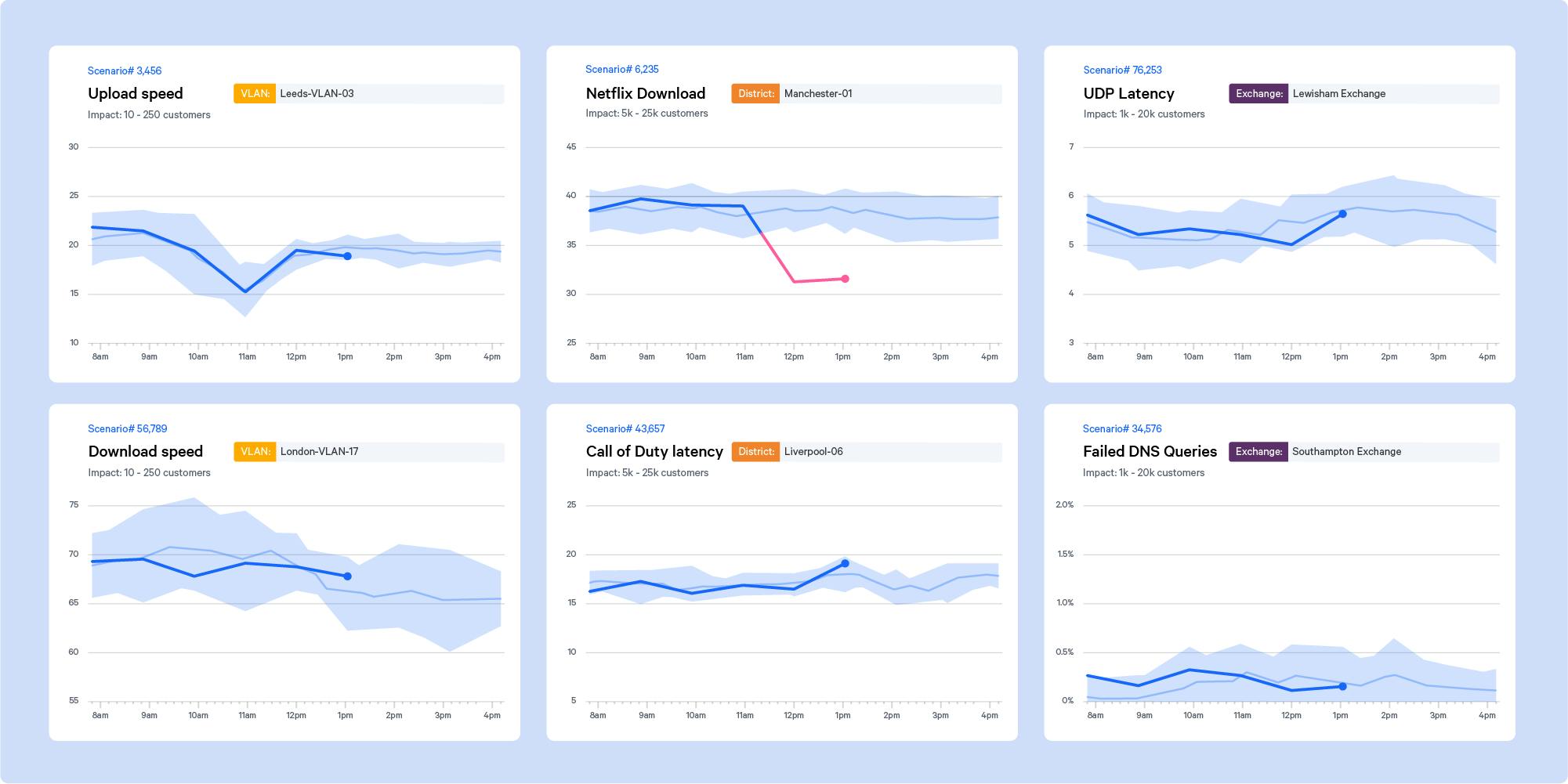What’s gone wrong and why?
FaultFinder’s job is to discover the problems on a broadband network and, crucially, what’s causing those problems – ideally before the broadband providers’ customers even notice that something is wrong.
It first takes that vast trove of performance metrics to calculate the expected performance levels on a particular broadband network. Those range from high-level metrics, such as the average download speed across the entire network, to very granular data, such as the average ping times when playing Fortnite. “We have this constant stream of incoming measurement data, and the predictability of it allows us to build trends of what is the expected performance based upon the historical average,” said Sam Crawford. “We know what the expected volumes should be, because they’re scheduled measurements and we have the historical volumes to act as our trend line. We’re basically comparing the current working set of measurements against our historical trends.”
Crucially, FaultFinder doesn’t raise the alarm when the performance of a given metric dips below a fixed threshold – say 10% slower than the average download speed – because setting fixed thresholds is of very limited use, as Sam explains.
“There’s no good, fixed set of bounds,” he said. “Some of these factors change by time of day.

FaultFinder compares current performance to historic trends
Some operators will, quite reasonably, have some congestion during peak hours, so you’ll see throughput drops slightly, latency increases slightly, packet loss increases slightly during those peak hours.”
“So, you don’t want to come up with a fixed set of thresholds that have to encompass all of the peaks and drops, because you’ll miss stuff while also being too sensitive at other parts of the day.”
Instead, FaultFinder learns about the network’s performance based on historical trends, and then applies a standard deviation multiplier across those previous trends to calculate what is an acceptable tolerance for that particular metric. This means, for example, that a significant dip in download speeds around the 8pm evening peak is less likely to raise an alert than a sudden fall at 4am in the morning, when the network would normally be less congested.















































